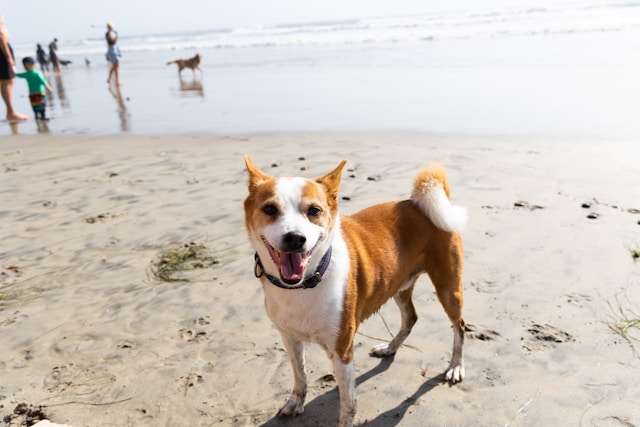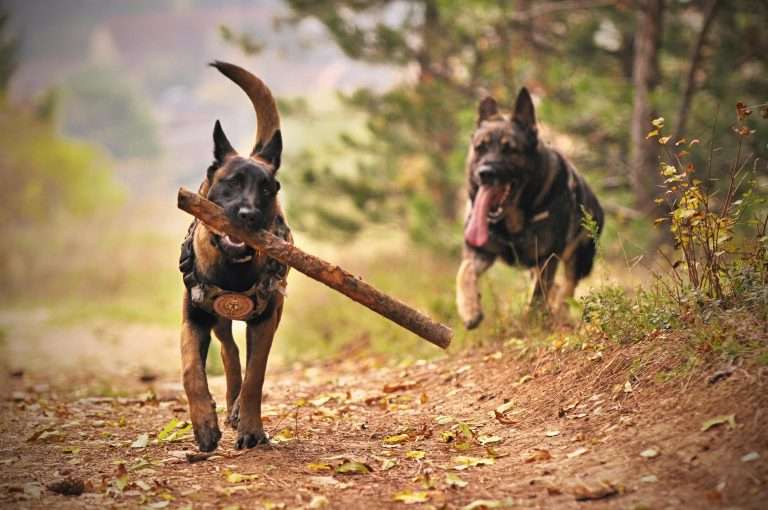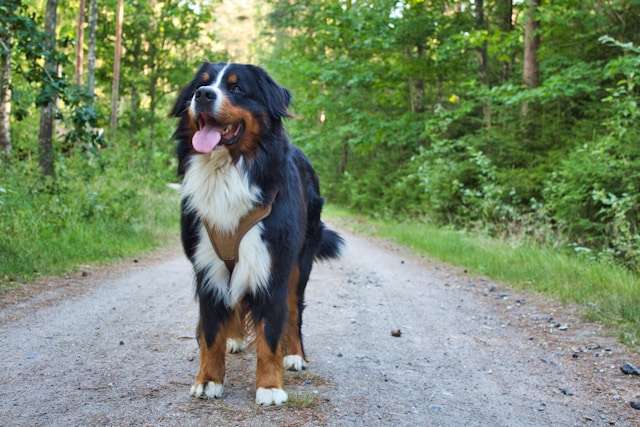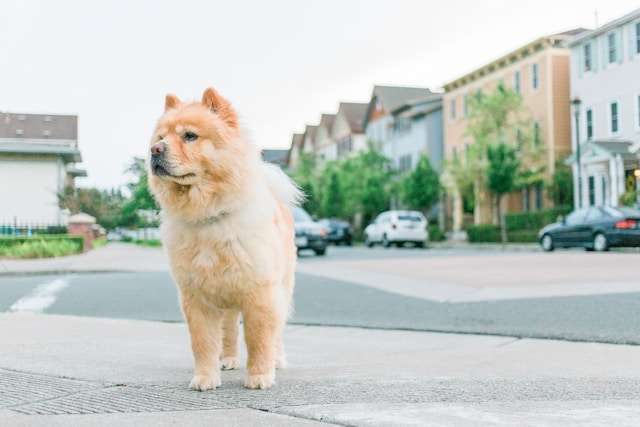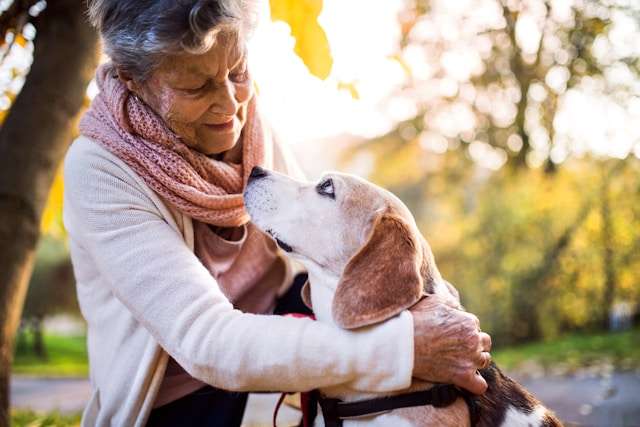10 Fascinating Facts About Affenpinscher Dogs You Didn’t Know
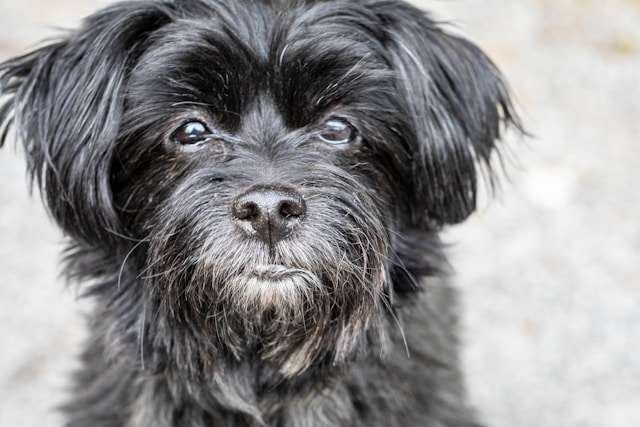
The Affenpinscher might be the most monkey-like dog you’ll ever see. This fascinating breed has captured my attention over the last several years of studying canines. Their German name means “monkey-like terrier,” and one look at their face explains why they’re often called the “monkey-face dog.”
Golden Retrievers and German Shepherds often steal the spotlight, but the Affenpinscher’s unique traits make it stand out among smaller breeds. This remarkable dog’s distinctive features and characteristics set it apart from other breeds I’ve studied. What I love about them is their rich heritage and surprising abilities that remain unknown to many dog enthusiasts.
Let me share ten remarkable facts about Affenpinscher dogs that highlight their unique place in the canine world. You’ll find their story fascinating—from their medieval roots to their modern charm—and understand why these delightful dogs deserve more recognition as beloved companion pets.
The Ancient Origins of the Monkey-Faced Dog
The fascinating story of one of the most unique dog breeds started in 17th-century Germany. Let’s take a closer look at the affenpinscher’s history and origin, a breed that has grown remarkably over centuries.
Medieval German Roots as Ratters
The Affenpinscher’s story began in Germany around the 1600s [1]. These small dogs looked quite different from what we see today. The original Affenpinschers were larger and worked as dedicated rats in kitchens, granaries, and stables [2]. Their German name means “monkey terrier” – a perfect description of their distinctive looks, which still show today in this German breed.
Table of Contents
Evolution from Working Dog to Companion Pet
The breed’s change from working dog to companion tells an amazing story. These dogs stood 12 to 13 inches tall at first and showed up in several colors:
- Gray and black
- Fawn and black-and-tan
- Gray-and-tan
- Solid red [3]
The Affenpinscher breed saw its most significant changes in the late 19th and early 20th centuries [1]. Breeders thought over ways to create a smaller, more refined version of these popular dogs. They focused on their friendly nature but managed to keep their spirited personality.
Historical Significance in European Nobility
The sort of thing I love about the Affenpinscher’s history is how they became prominent among European nobility. These charming dogs won the hearts of royal households across Europe by the 19th century [4]. Queen Victoria of England owned several Affenpinschers. The Duchess of Marlborough and the Belgian royal family also loved these dogs [4].
Many artworks and writings from the 18th and 19th centuries show the breed’s place in European high society [5]. These historical records help us see how the breed has maintained its unique traits over time. Their experience, from simple matters to nobility’s beloved companions, stands out as one of the most remarkable changes in dog breed history.
Surprising Physical Characteristics
The Affenpinscher’s uniquely charming appearance always amazes me at the time I get a close look. These small dog breeds have physical characteristics that make them truly special among other breeds, including the Brussels Griffon vs Affenpinscher comparison.
The Science Behind Their Monkey-Like Expression
What I love about their distinctive monkey-like face is how specific features combine to create it. Their prominent round, dark eyes, flat, turned-up nose, and alert ears create their signature expression [6]. Their simian appearance comes together perfectly with their distinctive facial hair pattern – a combination of bushy eyebrows, mustache, and beard gives them that unmistakable monkey-terrier look that defines the German monkey dog.
Unique Coat Types and Colors
Affenpinschers show remarkable variety in their coat types. Their wire-haired coat feels harsh and rough when unclipped, though it becomes softer and fluffier with clipping [7]. These dogs showcase several color variations:
- Black (the most traditional)
- Gray and silver
- Red with black mask
- Black and brown
- Beige (a unique mixture of red, brown, black, and white) [8]
The dog’s furnishings (the longer hair on their legs and face) often appear slightly lighter than their primary coat color [8].
Size Comparisons to Other Toy Breeds
Affenpinschers stand out as notably compact among dog breeds. They typically measure between 9.5 and 11.5 inches at the withers [6], making them one of the smaller members of the toy dog group. Their weight usually ranges between 7 and 10 pounds [9], though variations exist. Their wiry, medium-length fur makes them appear more substantial than other toy breeds [10]. These small-sized dogs carry themselves with remarkable presence and show off their “big dog” attitude in a tiny package.
Unexpected Intelligence and Abilities
These small but mighty dogs never cease to amaze me, challenging our expectations about canine intelligence. The Affenpinscher stands out among all dog breeds I’ve studied and ranks an impressive #37 among the world’s smartest dogs [11].
Problem-Solving Capabilities
What I love about these different dog breeds is their quick wit and problem-solving skills [12]. My experience with Affenpinschers shows they excel at:
- Mastering new commands quickly
- Solving puzzle toys independently
- Adapting to training challenges
- Learning from environmental cues
- Showing remarkable memory
Their intelligence shines through when training sessions stay short and engaging, though they can sometimes be stubborn [13]. Their low boredom threshold proves their sharp minds rather than indicating a training limitation.
Natural Hunting Instincts
Based on my behavioral studies, these small dog breeds retain strong hunting instincts from their ratting heritage. They maintain their historical purpose even in modern settings, which fascinates me. My observations show they get along well with other pets but pose a real risk to smaller animals like hamsters, gerbils, and birds [11]. This instinct proves their remarkable focus and determination.
Adaptability in Modern Environments
One of Affenpinschers’ most impressive traits is their exceptional adaptability. They adjust readily to changing circumstances [14] and make excellent travel companions among popular dog breeds. They thrive in all living situations, from busy city apartments to quiet suburban homes [15].
Their intelligence shows how easily they are guided through new environments. They excel in simple obedience to complex agility exercises [16]. Their mental agility and physical adaptability sets them apart from other dog breeds. These dogs need consistent mental stimulation [17] and respond exceptionally well to puzzle toys and interactive games that challenge their problem-solving skills.
Hidden Personality Traits
Affenpinschers never cease to amaze me with their complex and charming personalities. These tiny dogs pack more character into their small frames than many breeds twice their size, showcasing a unique affenpinscher temperament.
The Fearless ‘Big Dog’ Attitude
These small dogs show incredible courage that doesn’t match their tiny size. My work with Affenpinschers has shown me how they tackle challenges that make bigger dogs think twice [18]. They stand out because they’re:
- Spunky and alert
- Curious by nature
- Confident in their approach
- Quick to react when threatened
- Remarkably brave, facing challenges
Unique Bonding Patterns with Owners
I love these dogs because of their unique way of showing affection. They stay loyal to their families, but they like to balance independence and attachment. You’ll often see them hanging out in the same room as their family without needing constant cuddles [19]. This mix of autonomy and devotion creates an interesting relationship that differentiates them from other dogs.
Social Dynamics with Other Pets
These remarkable dogs have shown me their complex social side. Their interactions with other pets tell an interesting story. They usually get along fine with dogs in their family [19], but meeting new dogs can be tricky. They tend to prefer hanging out with their kind [19].
Their relationship with smaller pets sets them apart from other breeds. Their strong hunting instincts mean you should be careful if you have rodents or rabbits at home [19]. But they usually become good friends with the family cat, especially if they grow up together [19].
They often forget how small they are when they meet bigger dogs – I call this their “big dog syndrome” [10]. This fearless attitude looks excellent, but these pups need good socialization early to avoid getting too defensive [20].
Lesser-Known Health Advantages
These remarkable dogs’ unique health profile sets them apart from other breeds. My research and hands-on experience with Affenpinschers revealed some fantastic health benefits that most people don’t know about.
Genetic Strengths
Small dog breeds like Affenpinschers have surprisingly good genetic health. Thanks to dedicated breeders nationwide, these dogs stay healthy [21]. My analysis of different breeds shows that Affenpinschers need minimal medical care, and their first-year medical costs run about $300-400 [3]. They make excellent companions and won’t break the bank with healthcare costs.
Longevity Factors
Over the last several years studying popular dog breeds, the Affenpinscher’s life expectancy of 12-15 years stands out [22]. Several key factors help them live longer:
- High-quality, age-appropriate nutrition
- Regular preventative healthcare
- Proper weight management
- Consistent exercise requirements
- Mental stimulation
I love how these dogs stay active well into their senior years. Their long lives come from both good genes and proper care [23].
Breed-Specific Wellness Considerations
My research shows some unique aspects of keeping Affenpinschers healthy. They’re usually healthy, but certain wellness factors need attention. Here’s what helps keep them in top shape:
Nutritional Support:
- Glucosamine and chondroitin for joint health
- Omega-3 fatty acids for heart and coat health
- Probiotics for digestive wellness [24]
These dogs adapt well to various supplements that boost their natural health advantages. They also respond well to preventative care, which greatly improves their quality of life.
Another reason these dogs stand out is their hypoallergenic nature. While no dog is entirely allergen-free, Affenpinschers rarely trigger allergic reactions in sensitive people [3]. This makes them a great choice if you have mild allergies.
Regular vet check-ups help maintain their optimal health. These visits let you track any breed-specific conditions and catch problems early. Most Affenpinschers live long, healthy lives without needing much medical care [3], making them a practical choice among small dog breeds.
Conclusion
My years of studying and working with Affenpinschers have only deepened my fascination with these remarkable dogs. These incredible animals evolved from medieval ratters into beloved companions. Their distinctive monkey-like faces and spunky personalities set them apart from other toy breeds.
Small dogs can have prominent personalities, and Affenpinschers prove this with their sharp intelligence, problem-solving skills, and fearless nature. These compact companions bring many advantages to their owners. They maintain strong health, live impressively long lives, and adapt well to different living environments.
Be sure To Read Dog Breed Guide: Find Your Perfect Companion to discover more breeds like the Affenpinscher. These remarkable dogs show why the best things come in small packages. Your attention might be drawn to their charming looks, their intelligence could impress you, or their low-maintenance health profile might appeal to you. Whether looking for a cute affenpinscher puppy or an adult dog, this breed offers a unique and rewarding experience for dog lovers.
FAQs
Q1. What makes the Affenpinscher’s appearance unique? The Affenpinscher has a distinctive monkey-like face, round dark eyes, a flat turned-up nose, and alert ears. Their facial hair, including bushy eyebrows, mustache, and beard, completes their simian appearance, earning them the nickname “monkey dog.”
Q2. How intelligent are Affenpinschers? Affenpinschers are highly intelligent, ranking 37th among the world’s smartest dogs. They excel at problem-solving, quickly master new commands, and adapt well to various environments. Their sharp minds require consistent mental stimulation through puzzle toys and interactive games.
Q3. What is the typical lifespan of an Affenpinscher? Affenpinschers generally have a long lifespan, typically 12 to 15 years. They often maintain their vitality well into their senior years with proper care, including high-quality nutrition, regular preventative healthcare, and consistent exercise.
Q4. How do Affenpinschers interact with other pets? Affenpinschers generally get along well with other dogs in their family but may be challenging with unfamiliar dogs. They often prefer their own breed and can form positive relationships with cats when raised together. However, due to their strong hunting instincts, caution is advised when introducing them to smaller pets like rodents or rabbits.
Q5. Are Affenpinschers suitable for people with allergies? While no dog is completely allergen-free, Affenpinschers are considered relatively hypoallergenic. They are less likely to trigger allergic reactions in sensitive individuals, making them a potential option for people with mild allergies who want to own a dog.
References
[1] – https://showsightmagazine.com/dog-breeds/affenpinscher/ [2] – https://www.hillspet.com/dog-care/dog-breeds/affenpinscher [3] – https://betterpet.com/affenpinscher/ [4] – https://ilovemydogsomuch.com/from-royals-to-family-homes-the-fascinating-history-of-the-affenpinscher/ [5] – https://allforpaws.com/blogs/top-dog-breeds-guide/affenpinscher-dog-breed-guide?srsltid=AfmBOopg2Y8VxeLdmaqrzrDv8ruc0rIeIq35NYXF0MfirbhdO4YHw9Qv [6] – https://kids.britannica.com/students/article/affenpinscher/309709 [7] – https://en.wikipedia.org/wiki/Affenpinscher [8] – https://showsightmagazine.com/affenpinscher-colors-and-tail/ [9] – https://peeva.co/blog/a-comprehensive-guide-to-the-affenpinscher-dog-breed/?srsltid=AfmBOooOZiFj_Zj0sALhfFs36QzzyKHYj8vpwgWUEolGrtSgKQs7K-me [10] – https://www.dailypaws.com/dogs-puppies/dog-breeds/affenpinscher [11] – https://discover.hubpages.com/animals/affenpinscher-guide [12] – https://www.werescue.pet/breeds/affenpinscher/ [13] – https://www.akc.org/dog-breeds/affenpinscher/ [14] – https://www.caninejournal.com/affenpinscher/ [15] – https://dogo.app/dog-breeds/affenpinscher [16] – https://peeva.co/blog/a-comprehensive-guide-to-the-affenpinscher-dog-breed/?srsltid=AfmBOoopcaaqq6Z66xTIR__KT9Z-7YMkhrnWjNzMD7ltCklsUoyIV5e4 [17] – https://www.newsbytesapp.com/news/lifestyle/engaging-affenpinscher-minds-essential-activities/story [18] – https://ckcusa.com/breeds/affenpinscher/ [19] – https://www.yourpurebredpuppy.com/faq/affenpinschers.html [20] – https://peeva.co/blog/a-comprehensive-guide-to-the-affenpinscher-dog-breed/?srsltid=AfmBOorNdIuAAEswJjPihtE0b7vPDk47Ii6iBhlw6PN_aXoREI-h6XAq [21] – https://www.affenpinscher.org/about-affens/health-wellness [22] – https://www.webmd.com/pets/dogs/what-to-know-affenpinscher [23] – https://longtails.com/blogs/breeds/affenpinscher-longevity?srsltid=AfmBOoqdDqufj1G4YO4WiZdYWXy0YNTMvb-6bdViwNFqx47ujhVR9r0M [24] – https://www.petmd.com/dog/breeds/affenpinscher

